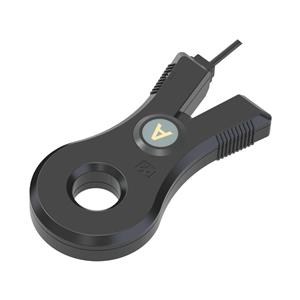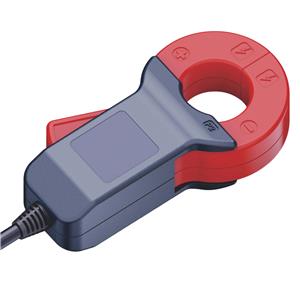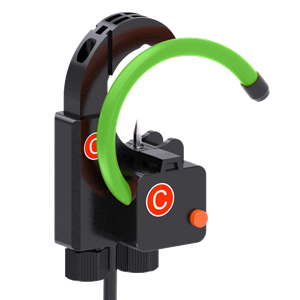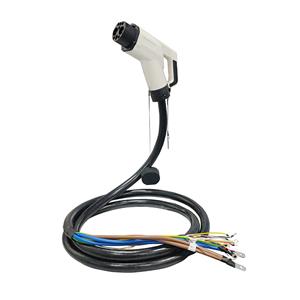Revolutionizing Non-Contact Current Measurement in Modern Power Systems
Revolutionizing Non-Contact Current Measurement in Modern Power Systems

Abstract:
The OFLS Series Rogowski coils represent a significant advancement in non-invasive electrical current measurement technology. These flexible, air-cored current transducers have become indispensable tools for power quality analysis, energy monitoring, and protection systems across various industries. This article explores the technical principles, design features, and diverse applications of these innovative measurement devices that are transforming how engineers approach current measurement challenges.
1. Fundamental Operating Principle
Rogowski coils operate on the fundamental principle of electromagnetic induction, based on Ampère's law. Unlike conventional current transformers with magnetic cores, OFLS Series coils feature a helical coil of wire wound on a non-magnetic core, returning to the starting point to form a toroidal winding. When an electrical conductor passes through the coil center, the time-varying magnetic field generated by the alternating current induces a voltage proportional to the rate of change of current (di/dt) in the coil. This voltage output requires integration to obtain the original current waveform, a process efficiently handled by modern electronic integrators.
The mathematical relationship is expressed as:
V(t) = -M × (di/dt)
Where M represents the mutual inductance between the measured conductor and the coil, and di/dt denotes the rate of current change over time.
2. Distinctive Design Features of OFLS Series
The OFLS Series incorporates several innovative design elements that enhance performance and usability:
Flexible Construction: The coil's flexible nature enables installation around existing conductors without system shutdown, significantly reducing downtime during maintenance or monitoring setup. This flexibility proves particularly valuable in space-constrained environments.
Color-Coded Identification System: As visible in the product imagery, the OFLS Series employs a sophisticated color-coding system with orange, yellow, green, and red markers. This system facilitates quick identification of different coil specifications, calibration factors, or application ranges, streamlining fieldwork and reducing configuration errors.
High Bandwidth Capability: The air-core design eliminates magnetic saturation concerns, allowing the coils to accurately measure currents from fractions of hertz to several megahertz. This wide bandwidth makes them ideal for analyzing complex current waveforms containing harmonics, transients, and high-frequency components.
Excellent Linearity: Without magnetic core materials that could saturate, OFLS coils maintain exceptional linearity over an extremely wide current range, from milliamps to hundreds of kiloamps, ensuring accurate measurements under diverse operating conditions.
3. Technical Advantages Over Conventional CTs
The OFLS Series offers several distinct advantages compared to traditional current transformers:
Inherent Safety: The open-loop design and low output voltage enhance operator safety, with the coil naturally short-circuit proof, unlike conventional CTs that can generate hazardous voltages if the secondary circuit opens under load.
Minimal Phase Error: Careful winding techniques and advanced manufacturing processes ensure consistent coil geometry, resulting in minimal phase displacement between primary and secondary signals—a critical factor for power measurement accuracy and protection relay coordination.
Lightweight and Compact: The absence of heavy magnetic cores and insulation oil makes OFLS coils substantially lighter and more compact than equivalent conventional CTs, simplifying handling and installation, particularly in retrofit applications.
4. Diverse Application Spectrum
The versatility of OFLS Series coils supports numerous applications across the power industry:
Power Quality Analysis: Their wide bandwidth makes these coils perfect for harmonic analysis, transient capture, and power quality investigation in commercial and industrial power systems, where understanding waveform distortion is crucial for troubleshooting and compliance.
Energy Management Systems: In submetering applications and energy audits, OFLS coils provide accurate real-power and energy measurements without disrupting existing electrical installations, facilitating energy conservation initiatives.
Protection and Control: While traditionally used for measurement, advanced Rogowski coils with appropriate integrators are increasingly applied in protection schemes, including differential protection for transformers, buses, and generators.
Variable Speed Drive Measurements: The ability to accurately measure non-sinusoidal currents makes these coils ideal for analyzing input and output currents of frequency converters and other power electronic equipment.
5. Implementation Considerations
Successful implementation requires attention to several technical aspects:
Integration Requirements: Since the coil output voltage is proportional to the rate of current change, an external integrator circuit or digital integration algorithm is necessary to reconstruct the primary current waveform accurately.
Return Conductor Positioning: For accurate measurement, the conductor must pass through the coil center, and the return conductor (in single-phase applications) should remain outside the coil loop to prevent field cancellation.
Mechanical Protection: While flexible, the coils require careful handling to avoid sharp bends or crushing that could damage the winding and affect calibration accuracy.
Conclusion
The OFLS Series Rogowski coils represent a sophisticated solution for modern current measurement challenges, combining theoretical elegance with practical versatility. Their unique combination of flexibility, safety, wide dynamic range, and excellent frequency response positions them as essential tools for engineers working on everything from power quality investigations to advanced protection systems. As electrical systems become increasingly complex with renewable integration and power electronics, the role of precise, reliable current measurement technologies like the OFLS Series will continue to grow in importance, driving efficiency and reliability in power systems worldwide.




